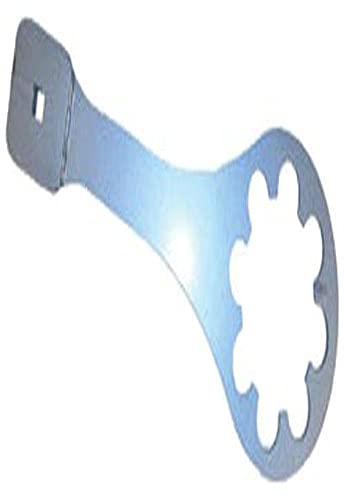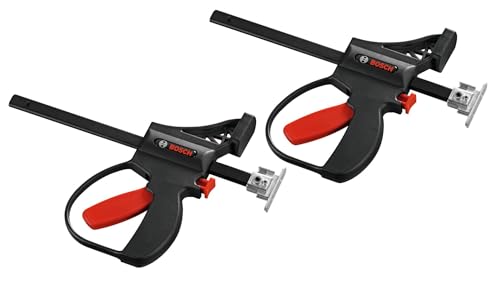
If you are a woodworking enthusiast or a professional carpenter, having a table saw in your workshop is essential. A table saw is a powerful tool that can help you make precise and accurate cuts in various materials, including wood, plastic, and metal. One of the most common challenges that woodworkers face is cutting a straight edge. Thankfully, with the right techniques and tips, you can easily achieve a straight and clean edge using a table saw.
Choose the right blade: Selecting the right blade for your table saw is crucial when it comes to cutting a straight edge. For cutting wood, a carbide-tipped blade with a high tooth count is recommended. This type of blade will ensure clean and smooth cuts. If you are cutting materials other than wood, make sure to choose a blade specifically designed for that material.
Set up the table saw: Properly setting up your table saw is essential to achieve accurate and straight cuts. Ensure that the table saw is on a stable surface and the fence is properly aligned parallel to the blade. Use a straight edge guide or a level to ensure that the fence is perfectly straight. Adjust the blade height to the desired cutting depth.
Use a push stick: To avoid any accidents and ensure your safety, always use a push stick when cutting a straight edge with a table saw. A push stick will help you guide the material through the blade while keeping your hands at a safe distance. This will not only help you maintain control over the material but also prevent any potential kickbacks.
Remember, safety should always be your top priority when using power tools. Always wear appropriate safety gear, such as safety glasses and gloves, and make sure to familiarize yourself with the safety guidelines provided by the manufacturer of your table saw.
Understanding the Basics of Table Saws
A table saw is a versatile and powerful tool that is commonly used in woodworking. It consists of a circular blade that protrudes through a slot in a flat table surface. The blade can be adjusted to different heights and angles, allowing for precision cuts.
Table saws are typically used to make long, straight cuts in wood, but they can also be used for other tasks such as making crosscuts, bevel cuts, and dado cuts. Understanding the basics of table saw operation is essential for achieving accurate and safe cuts.
Components of a Table Saw
A table saw consists of several key components:
| Table surface: | The flat surface on which the wood is placed for cutting. |
| Rip fence: | A guide that runs parallel to the blade and helps to ensure straight cuts. |
| Miter gauge: | A guide that can be adjusted to make angled cuts. |
| Blade: | The circular cutting tool that can be adjusted for different cuts. |
| Blade guard: | A safety feature that covers the blade and prevents accidental contact. |
Table Saw Safety
Before using a table saw, it is important to prioritize safety:
- Read and understand the instructions provided by the manufacturer.
- Wear appropriate safety equipment, such as goggles and ear protection.
- Ensure the saw is properly adjusted and the blade is sharp.
- Keep the work area clear of debris and clutter.
- Use push sticks or other tools to keep your hands away from the blade.
- Avoid wearing loose clothing or jewelry that could get caught in the saw.
- Disconnect the power source when making adjustments or changing blades.
By following these safety guidelines, you can reduce the risk of accidents while using a table saw.
Choosing the Right Blade for a Straight Edge Cut
When it comes to cutting a straight edge with a table saw, selecting the right blade is crucial. The type of blade you choose will affect the smoothness of the cut, the speed at which you can make the cut, and the overall quality of your finished workpiece.
Consider the Material
Before choosing a blade, consider the type of material you will be cutting. Different materials require different blades for optimal results. For cutting wood, a general-purpose crosscutting blade with a high tooth count is usually the best choice. This type of blade is specifically designed to make smooth cuts across the grain of the wood. Alternatively, if you are cutting plywood or laminate, a blade with a low tooth count and alternating top bevel (ATB) is recommended.
If you will be cutting metal, a carbide-tipped blade is ideal. These blades are made with a harder cutting edge that can withstand the rigors of cutting through metal without becoming dull too quickly.
Blade Size and Tooth Count
The size of the blade you choose will depend on the size of your table saw, as well as the depth of the cut you need to make. Most table saws can accommodate blades ranging from 8 to 12 inches in diameter. Additionally, the tooth count of the blade will determine the smoothness of the cut. Blades with a higher tooth count produce cleaner cuts, while blades with a lower tooth count are better suited for rough cuts.
Blade Quality and Durability
Investing in a high-quality blade is essential to achieve a straight edge cut. Look for blades made from premium materials, such as carbide or high-speed steel, as they tend to last longer and provide better cutting performance. While these blades may be more expensive upfront, they are a worthwhile investment in the long run.
| Blade Type | Material | Tooth Count | Size | Quality |
|---|---|---|---|---|
| General-Purpose Crosscutting | Wood | High | 8-12 inches | Premium |
| ATB | Plywood, Laminate | Low | 8-12 inches | Premium |
| Carbide-Tipped | Metal | High | 8-12 inches | Premium |
By considering the material, blade size and tooth count, as well as blade quality and durability, you can choose the right blade for achieving a straight edge cut with your table saw. Remember to always prioritize safety when operating power tools and follow manufacturer guidelines when selecting and installing blades.
Setting up Your Table Saw for a Straight Edge Cut
When it comes to cutting a straight edge with a table saw, having the saw properly set up is crucial. Here are the steps to follow to ensure a precise and accurate cut:
1. Check the Blade Alignment
The first thing you need to do is check the alignment of the blade. Make sure it is parallel to the miter gauge slots and the fence. This can be done by using a reliable measuring tool, such as a dial indicator, to ensure perfect alignment.
2. Adjust the Rip Fence
Next, adjust the rip fence to the desired width of your cut. Ensure that the fence is parallel to the blade and securely locked in place. A wobbly or misaligned fence can result in an uneven cut.
3. Set the Blade Height
Now it’s time to set the blade height correctly. Adjust the height so that the teeth of the blade are just a bit higher than the material you are cutting. This ensures a clean and precise cut while minimizing the risk of kickback.
4. Use a Featherboard
Consider using a featherboard to help keep the material firmly against the fence and prevent any movement during the cut. This will contribute to a straight and accurate edge.
5. Make Test Cuts
Before cutting your actual workpiece, it’s always a good idea to make test cuts on a scrap piece of wood. This will allow you to fine-tune your setup and make any necessary adjustments to ensure a straight and clean cut.
6. Practice Safety Measures
Lastly, don’t forget to practice proper safety measures when operating a table saw. Wear safety glasses, keep your hands a safe distance away from the blade, and use a push stick or push block to guide the material through the cut.
By following these steps and taking the time to properly set up your table saw, you can achieve a straight edge cut with precision and ease. Remember, safety should always be a top priority when using power tools like a table saw.
Executing a Straight Edge Cut with Precision
If you want to achieve precise and accurate cuts with your table saw, it is essential to know how to execute a straight edge cut. This technique allows you to create clean, straight lines on your workpiece, ensuring professional-looking results.
To begin the process, you’ll need to ensure that your table saw is properly set up. Make sure the blade is aligned with the fence and at the correct height. Additionally, ensure that the fence itself is set parallel to the blade. This will help you maintain a straight line throughout the cut.
Once your saw is ready, mark the desired cutting line on your workpiece using a pencil or another suitable marking tool. Take your time with this step to ensure accuracy. It is best to use a straight edge or a ruler as a guide to keep the line perfectly straight.
When you’re ready to make the cut, position the workpiece on the table saw with the marked line aligned with the fence. Begin feeding the workpiece into the blade slowly and steadily. It’s important to maintain a consistent feed rate to prevent any potential kickback or binding.
Keep a firm grip on the workpiece and always use a push stick or push block to guide it through the blade, especially when the piece is smaller or narrower. This will help keep your fingers safe and maintain control over the cut.
As you approach the end of the cut, be sure to continue applying even pressure and feed the piece completely past the blade before releasing it. This will ensure a smooth, straight edge without any tear-out or imperfections.
After completing the cut, inspect the edge to ensure it is straight and free of any defects. If needed, you can use sandpaper or a jointer to refine the edge further and achieve a polished finish.
By mastering the technique of executing a straight edge cut with precision, you can elevate the quality of your woodworking projects. Practice this method regularly to become more comfortable and proficient, and enjoy the satisfaction of creating flawless, straight cuts with your table saw.






